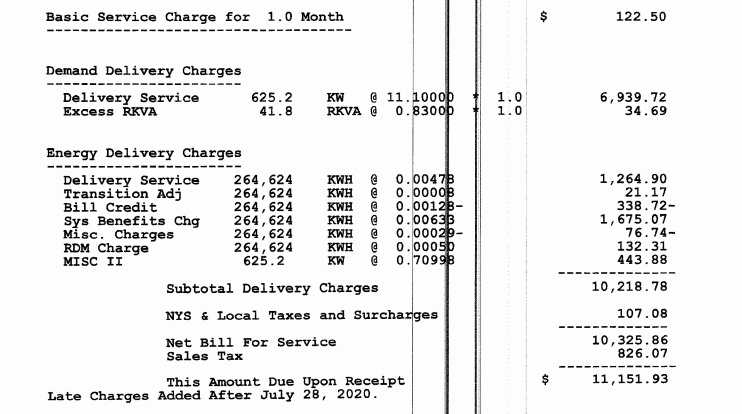3 Aug. 2023

Utility bills are the bane of every commercial building’s existence. However, skilled nursing facilities, or SNFs, are particularly constrained by energy costs. The average skilled nursing facility has 122 beds, with each resident requiring a significant amount of power to maintain their treatment and room. In this article, we will delve into the anatomy of an SNF utility bill to understand just what makes these charges so high, and where they can be reduced.
Pictured below, we have an anonymized energy bill from a real SNF. In this bill, utility charges are broken down into 2 sections, the demand delivery charges, and the energy delivery charges.

Energy delivery charges are the energy charges for a building throughout the month for its power usage, while demand delivery charges are the energy charges applied to a building during its 15-minute maximum usage window, also known as peak demand. These 15 minutes of peak demand make up a significant portion of utility expenses for the month, especially in commercial buildings.
While the majority of the energy service is delivered under regular delivery charges, 0.2% of this facility’s energy charges are delivered under a demand charge. This demand charge is at a 2,000x multiple, and costs the facility over half of its bill. So why are facilities paying half of their energy charges for this 0.2% of their energy delivery?
Demand delivery charges are applied to peak energy usage to account for utility suppliers to support the rare usage peaks over the month where multiple buildings are using high rates of energy usage.
Think: mid-afternoon on the hottest day of the year. Every building on a power grid is running their air conditioning, so energy suppliers must generate and distribute their maximum energy to several buildings hitting their peak demand for the month. These moments cost energy suppliers significantly, as supplying such a quantity of power requires significantly more infrastructure and operational capacity than any other time of the month. Thus, demand delivery charges weere created to encourage spreading out your energy usage across the month to minimize strain on generation and distribution capacity.
As pictured in the energy bill above, peak energy usage runs skilled nursing facilities huge portions of their utility charges. Though high utility charges have been accepted as an industry-wide standard, there is a solution, and that solution is peak shaving.
Peak shaving is the process of shifting energy production and consumption to occur at a time when grid prices and demand are lower through a process called load shifting. Peak shaving offers skilled nursing facilities the ability to reduce the amount of energy charged to their demand delivery, significantly cutting energy operational costs. Setpoint’s Climate-as-a-Service solution includes a platform with an integrated machine learning program to conduct peak shaving for your SNF, so your facility can focus on serving each individual residents’ needs without worry about an astronomical utility bill.
Reach out to one of Setpoint’s climate experts today to start saving on your utility bill with Setpoint’s peak shaving AI!